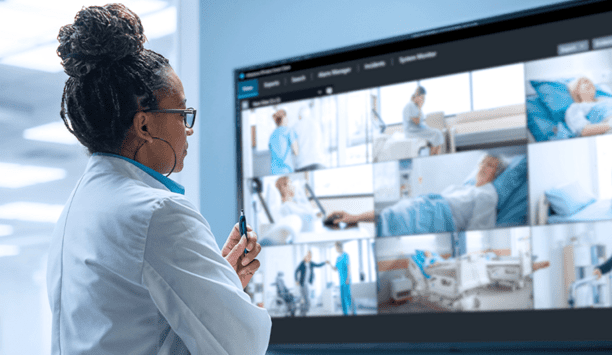The healthcare IT ecosystem has become increasingly complex over the last decade. Connected medical devices, Electronic Health Records (EHRs), quality measurement systems and other innovations have transformed the way patient care is delivered, how outcomes are measured and monitored, and how patients connect with healthcare providers.
But with greater connection and complexity come greater risk and responsibility. Hospitals and other healthcare organisations have to comply with strict rules under HIPAA in the U.S. and GDPR in Europe and other regulations that protect private medical records and other patient information, such as financial data.
Growing cybersecurity concerns
They also must be able to address growing cybersecurity concerns that could put hospital networks, data or even patient safety at risk. One of the most critical steps that healthcare organisations can take to protect patients, data and assets is controlling who has access to critical systems and devices.
- User authentication is the ability to correctly identify an individual user and match their information to the devices or systems they are using.
- Access control is the ability to ensure that only authorised users are able to gain access to an asset or system.
Hygienic contactless access
User authentication and access control solutions help healthcare organisations protect patient safety
User authentication and access control solutions help healthcare organisations protect patient safety, comply with data privacy regulations, reduce loss and theft, and monitor productivity and healthcare quality metrics.
For many applications, the simplest solution starts with something most healthcare workers already carry: an ID badge equipped with a radio frequency identification (RFID) tag. RFID-enabled systems can help healthcare organisations improve security and enable tracking for a broad range of devices and software systems. They are easier to manage and more secure than password and PIN systems and allow fast and hygienic contactless access to medical equipment, supplies and records.
User authentication and access control
RFID systems for user authentication and access control can be used across a variety of systems and devices in a healthcare setting. SSO systems allow a user to sign into the hospital network and access all of the software systems and records they are authorised to use and view. An RFID reader can be attached to, or embedded in, each workstation and mobile cart to enable fast and easy sign-on with an employee ID badge.
The reader confirms the user's identify for the SSO software, which controls access to all of the systems on the hospital network. Presenting a badge is faster than signing in to a workstation with a username and password and provides a record of who is logging into each workstation and what systems they are accessing.
Protecting patient privacy and control access
This is a real benefit in a healthcare setting in which workstations may be shared at a busy nursing station or placed on mobile carts for patient check-in and bedside point-of-care. It allows many users to securely share the same workstations, while ensuring that each one has access to the systems and information they need—and nothing they are not authorised to view. HIPAA and GDPR require healthcare providers to protect patient privacy and control access to sensitive medical records.
This helps organisations comply with privacy regulations and track who is accessing
Now that most of this information is stored in electronic form, providers need ways to control who is allowed to view or change information in the patient's EHR. RFID readers attached to computer systems can be used to verify the user's identity when they access the EHR software. This helps organisations comply with privacy regulations and track who is accessing and changing patient information.
Diagnostic and monitoring devices
The medical device world includes a broad range of therapeutic, diagnostic and monitoring devices, from infusion pumps to mobile X-Ray machines. Most of these devices require specialised knowledge to operate. Some can cause harm to patients if they are misused, turned on or off at the wrong time, or have the wrong settings.
Increasingly, these medical devices are also connected to each other or to hospital networks, creating new cybersecurity concerns. The FDA has issued cybersecurity guidance that requires medical device developers to have systems in place to limit the ability of unauthorised people to access device data or change settings. Integrating RFID readers into medical devices is an easy way to control physical access and track who is changing device settings and when.
RFID-enabled user authentication
At the same time, hospitals need to have systems in place to curb excess use
An RFID-enabled user authentication and access control system prevents accidental or deliberate harm to patients that may result when untrained people or malicious actors change system settings. Tracking supplies, medications and controlled substances is a critical concern for hospitals and other healthcare providers.
Nurses and other healthcare workers need fast access to supplies and medications to provide effective patient care. At the same time, hospitals need to have systems in place to curb excess use and prevent theft of expensive materials or controlled substances such as opioid medications. They also need to make sure the right patient gets the right medications and track material use by patient for accurate accounting and billing.
Tracking healthcare workers
RFID readers integrated into supply carts and cabinets prevent theft and encourage responsible use by controlling access to valuable materials or drugs and monitoring who is using supplies. Electronic kiosks and room display systems can be used to check patients into rooms and record who is checking on them and how often.
In a hospital or nursing home setting, they can replace whiteboards often used to track which healthcare workers are on duty and exchange information with healthcare workers on other shifts. With an RFID system, nurses and aides can simply flash their badge to check in to the room and record their patient visit. This makes it easier to track patient care metrics and maintain continuity between providers across shifts.







